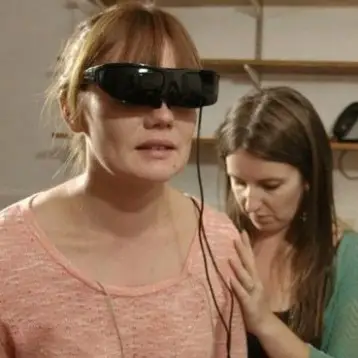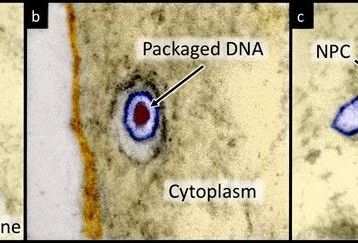A stained vertical wild-type retinal section (left) and a schematic representation of retinal tissue (right). (image from Cell reports under a Creative Commons Attribution-NonCommercial-No Derivative Works license)
Researchers from the Centre for Genomic Regulation (CRG) in Barcelona have discovered a pathway that triggers the reprogramming and regeneration of retinal neurons. The same technique could one day be applied to the regeneration of other nervous tissues as well.
Professor Pia Cosma and her team at CRG have used a method known as cell fusion mechanism to reprogram the neurons in the retina. This mechanism include introduction of bone marrow stem cells into a damaged retina. The newly introduced undifferentiated cells fuse themselves inside the retinal neurons and help regenerate the living retinal tissue.
–
–
Cosma’s team was able to regenerate the retina and reprogram its neurons using cell fusion in a living organism for the first time. The team was also able to identify the signaling pathway that, once activated, allows the neurons to be reprogrammed through their fusion with bone marrow cells.
According to Daniela Sanges Cosma’s team: "This discovery is important not only because of the possible medical applications for retinal regeneration but also for the possible regeneration of other nervous tissues".
This research is in the very early stages but already there are laboratories interested in being able to continue the work and take it to a more applied level.
–
–
More information can be found on the CRG website.
–
–
This is not the first time TFOT is covering potential techniques for tissue regeneration. In 2009 we have published an article covering a research from a group in the Linkoeping University in Sweden, led by Prof. Gunnar Kratz, who successfully created human bone, cartilage, and other tissue types from human connective tissue stem cells. This research has a another step in the path towards artificial organ transplants and organ regeneration.
–
–
In a different, unrelated article conducted by researchers from Yale University, scientists have discovered evidence that tiny hairs found on mammals’ brain cells have an important role in transmitting molecular signals. The molecular signals prompt the creation of neurons in different brain areas. These findings may also contribute to the research of brain regeneration.










